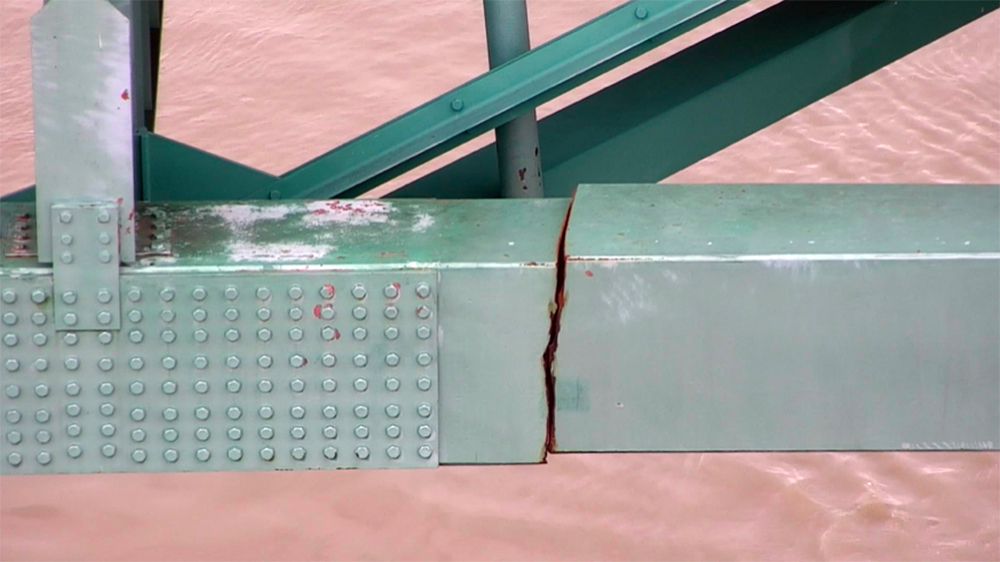Some of you may remember that back in 2015 the Tennessee Department of Transportation (TDOT) announced plans to shut down the I-55 bridge over the Mississippi in Memphis for nine months. TDOT said it needed to do so in order to install a “roundabout” interchange on the Memphis end of the bridge. The entire project was to begin in early 2017 and last through November 2019, effectively screwing up traffic across the bridge and through South Memphis for two years.
It didn’t happen. And that’s mainly because some people with common sense (including this newspaper’s staff) raised hell against it, pointing out that shutting down the “old bridge” was a nightmare scenario, one that would funnel 100,000 vehicles a day (double its then-current traffic count) across the Hernando DeSoto Bridge and expose the entire Central U.S. to a potential shutdown of commerce should something happen to the one remaining bridge.
Over in West Memphis, state Senator Keith Ingram’s hair was on fire. He rightly pointed out that the shutdown would “devastate local economies throughout Eastern Arkansas and would cripple emergency services in the event of an accident or natural disaster.”
The late Phil Trenary, president and CEO of the Greater Memphis Chamber, cited a post-9/11 study that showed that closing both of the city’s bridges would have a negative economic impact of about $11 billion to $15 billion per year, adding that the impact on business would be “significant to not only the local economy but to the national economy.”
The Flyer’s Toby Sells wrote a comprehensive cover story on the subject. We editorialized against the shutdown vociferously and often. Eventually, thanks to building public, political, and business opposition, the TDOT plan was mothballed, hopefully forever. The area’s leaders came to recognize that Memphis would be in big trouble if we ever got down to one bridge.
Oops.
As we all know, thanks to the discovery of a fissure in a structural beam on the Hernando DeSoto Bridge, the feared “down-to-one-bridge” scenario has happened. And as was predicted in 2015, traffic is backed up on I-40, through the city, and on the south I-240 loop, as 80,000 vehicles a day are funneled across a narrow highway bridge built 70 years ago to handle one-fourth that amount of traffic.
Imagine if the break on the Hernando DeSoto Bridge had been discovered in, say, June 2017, during TDOT’s proposed shutdown. Or worse, imagine if something should go awry on the I-55 bridge now. Can you say Helena, Arkansas? Or Dyersburg, Tennessee? Those are the nearest two Mississippi River crossings. Local — and national — commerce would suffer a horrific hit.
But thankfully the TDOT bridge-closure didn’t happen in 2017. People raised hell. The bureaucrats were stopped. Now, with any luck, the “new bridge” gets fixed in the next couple months, and we get back to normal. But we need a new normal. There’s a lesson to be learned here, and the time to act on it is now.
We have two bridges, both over a half-century old, both facing deterioration and maintenance issues. It’s obvious that Memphis needs a third bridge across the Mississippi. And it isn’t just about Memphis. It’s about the entire interstate commerce system through the middle of America, North and South, relying on a rickety, aging infrastructure that was built for the 1960s and 1970s. A new bridge addresses current and future issues. It could integrate with the I-69 corridor and maybe even incorporate space for future high-speed rail. Why not think big?
It’s not like we’d be asking for the moon. St. Louis has six major bridges across the Mississippi. Davenport, Iowa, has three. Hell, Dubuque, Iowa, has two bridges. We’re tied with Dubuque, people. It’s in our interest and in the country’s interest to plan for the future, not to wait until the two extant bridges fall completely apart. Officeholders and business leaders from Tennessee, Arkansas, and Mississippi need to get together and form a commission to explore the best way to get this moving.
Patching a crack with overlaid slabs of steel is a temporary solution, a band-aid that doesn’t address the overarching issues of a deteriorating infrastructure. Moving toward getting a new bridge should become a priority now — not when we’re forced to deal with another bridge shutdown. We’ve been shown a glimpse of the future. It’s time to face it, realistically.
